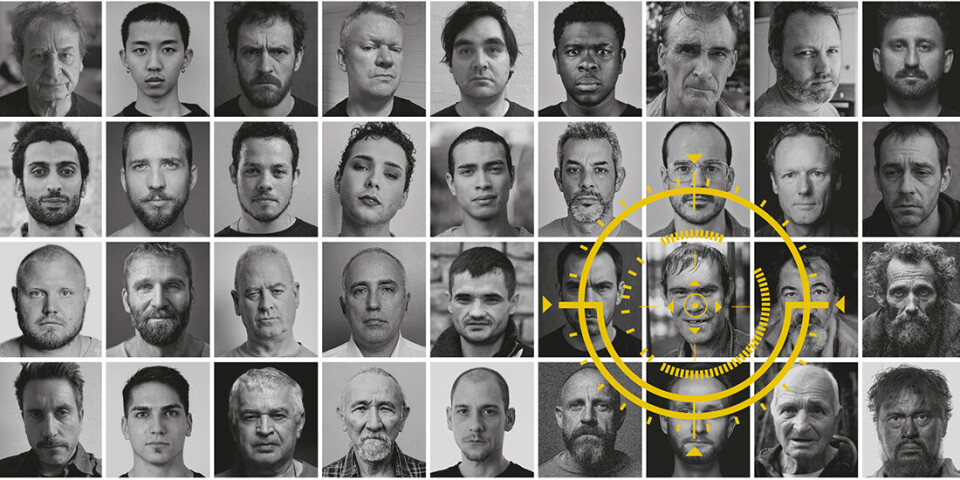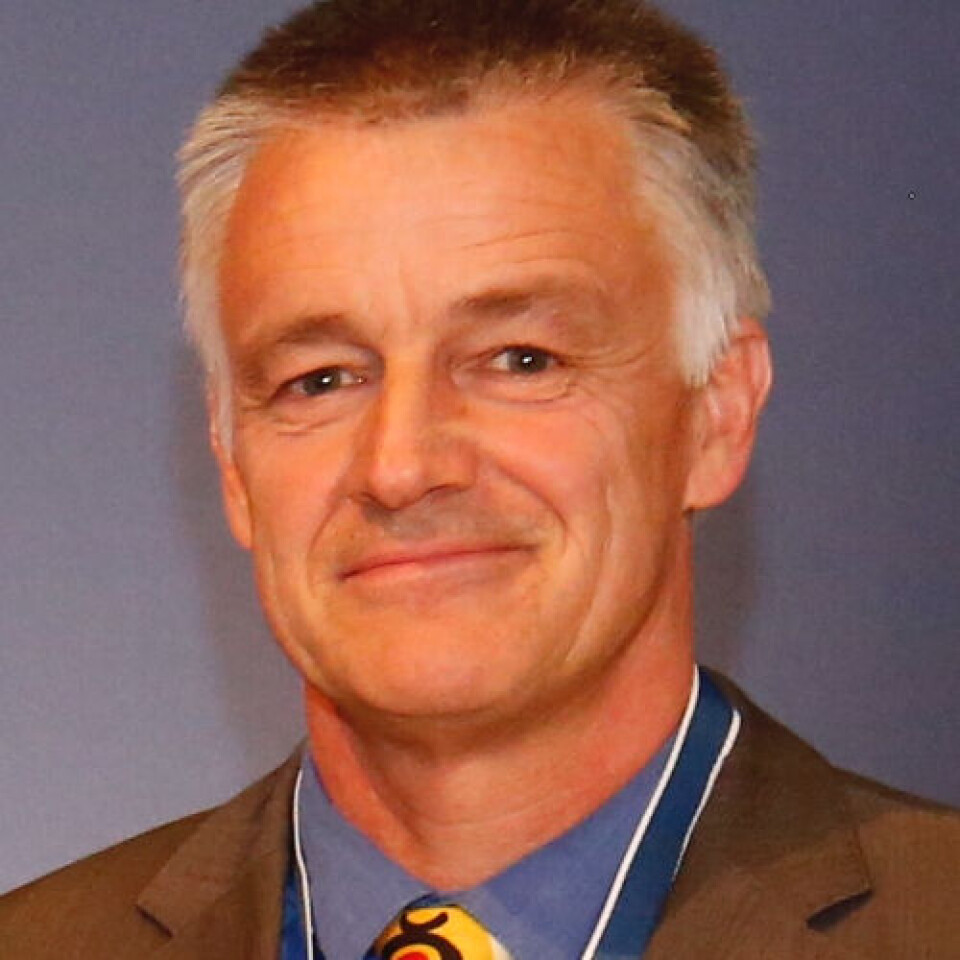THIS CONTENT IS BROUGHT TO YOU BY NTNU Norwegian University of Science and Technology - read more
They never forget a face: Super-recognisers can reveal identity fraud
This is an ability police forces around the world find very useful. It now seems that this superpower can be used for more than previously thought.

We're in the UK. The investigation into an armed robbery has been at a standstill for a long time. All the police have to go on is some low-quality video footage and a few tentative leads.
After 18 months without a breakthrough, however, the case takes a sudden turn: By pure coincidence, one of the investigators notices a face from the grainy CCTV footage in a busy shopping street – and the perpetrator is promptly arrested.
Another UK police officer is said to have arrested a suspect in a similar case, eight months after seeing a composite sketch of the individual.
A third reports having made an arrest after recognising a scar from ten years earlier.
An exclusive group of people
These three investigators belong to an exclusive group of people: the super-recognisers.
“Super-recognisers are not only exceptionally skilled at comparing and remembering faces, they can also identify individuals under conditions that normally make facial recognition very challenging. Such as in unclear and dark images, or in environments filled with distracting elements,” says Professor Christoph Busch.
He is head of the Norwegian Biometrics Laboratory at NTNU.
We will soon see that the research he has recently conducted, together with colleagues from the UK, Germany, and Norway, suggests that the abilities of super-recognisers extend even further than previously thought.
But first, a few words about our memory.
Our memory is not particularly reliable
Generally speaking, human memory is not particularly reliable. Elizabeth F. Loftus is one of the world’s most famous memory researchers. She states that remembering has more in common with assembling a puzzle than playing back a video recording.
Sometimes it takes nothing more than a slightly leading question before the pieces of what actually happened mix with new information. This can result in false memories.
As a result, incorrect eyewitness accounts have led to many miscarriages of justice over the years.
According to statistics from the non-profit organisation the Innocence Project, over 60 per cent of the wrongfully convicted individuals they have helped to exonerate were convicted due to false eyewitness testimonies.
This knowledge highlights just how impressive the super-recognisers’ ability to accurately compare and remember faces is.
“It really is like having a superpower,” says Busch.
The police saw an opportunity
For a long time, research on facial recognition mainly focused on those at the opposite end of the scale. People who, for various reasons, are no longer able to recognise even the faces of their loved ones. Around 2 per cent of the population are thought to be affected by this condition.

About 15 years ago, research discovered that a similar proportion of people are super-recognisers. It did not take long before the police began exploring the possibilities of using this special ability.
London’s Metropolitan Police, for example, brought in 20 super-recognisers to identify individuals who stole or committed vandalism during the 2011 riots in London.
Identified over 600 perpetrators
These super-recognisers were recruited from within their own ranks. They managed to identify over 600 perpetrators by studying video footage from surveillance cameras and comparing it to archived mugshots.
Over 70 per cent of those identified ended up being convicted, after physical evidence and confessions were obtained.
This success led the London police to quickly establish a permanent special unit of super-recognisers. According to their own statistics, this significantly increased the annual number of identifications.
It did not take long before police in other countries followed suit, and super-recognisers are now being used in Germany, Australia, Austria, the USA, and Switzerland.
May perhaps also reveal if images have been manipulated
Exactly how far the abilities of super-recognisers extend is still an unanswered question. But research conducted by Busch and colleagues shows that the area of use for this very special ability may be greater than previously assumed.
“We've been conducting research for many years on how to detect whether images have been manipulated, for example in connection with border control. Unlike in Norway, in many European countries, people can provide their own photos when obtaining a passport. This has made image manipulation a widespread problem,” explains Busch.
While some forms of manipulation are relatively harmless, others are far more problematic.
Sneaky method allows two people to use the same passport
“Some people just want to look their best in their passport photo. They might use an app to raise their eyebrows or smooth out some wrinkles. Other people, however, use manipulation to sneak through border controls,” says Busch.
One of the most cunning methods to achieve this is ‘morphing.’
“Morphing is when you blend two photos of two different people into one. The photo will then share similarities with both of the original faces, making it possible for two people to use the same passport,” he explains.
It has been known for quite some time that morphing can cause big problems. But it was not until a 2022 study showed that professional border control officers accepted nearly one-third of the morphed images they were presented with that serious alarm bells started to ring.
Super-recognisers could become mentors
This is part of the reason researchers have investigated whether the abilities of super-recognisers can be transferred to other tasks. Tasks that are not strictly related to recognition.
“Not only are the super-recognisers we studied significantly better than the control group at detecting morphed images, they're also better at recognising when they're shown authentic, unmanipulated images,” says Busch.
The fact that super-recognisers perform so well on other tasks that humans usually struggle with is good news. And it is not because all positions involving this type of task can now be filled with super-recognisers.
Frøy Løvåsdal is a senior adviser at the National Police Directorate and has collaborated with the biometrics team at NTNU since 2012.
She explains that perhaps the most promising use of super-recognisers for the Norwegian police is as a kind of mentor:
“The really good morphed images are almost impossible to detect, both for humans and for the algorithms we currently have. Fortunately, it looks like training helps,” says Løvåsdal.
Their abilities can give us better algorithms
Much suggests that the super-recognisers’ very special abilities are innate. But that does not mean it is impossible to train other people to become better at recognising faces and manipulated images.
“You can’t just decide to become a super-recogniser. However, our research shows that participants’ ability to detect manipulated images improved simply by taking part in the experiments,” says Løvåsdal.
She specifically points to two areas where super-recognisers can be useful:
“If we manage to understand what makes super-recognisers so good at remembering and comparing faces, we can use that knowledge to develop better training programmes for the relevant jobs,” she says.
By equipping super-recognisers with sensors that track their eye movements, researchers have already gained some understanding of which areas they focus on most when looking at a person’s face.
Exactly what they focus on within these areas, however, is still uncertain. If they manage to solve this puzzle, Løvåsdal believes that super-recognisers may also help us develop better algorithms for automated facial recognition.
Humans must be involved
Even in a world with better algorithms, it's still important that humans are part of the process.
“Our research suggests that a combination of algorithms and human recognisers is probably the best solution," says Busch.
While algorithms can handle many of the tasks, humans need to step in when uncertainty arises.
"It's generally a good idea to have humans involved in making important decisions when needed,” he says.
Løvåsdal agrees. She stresses that neither algorithms nor super-recognisers will replace any of the people already working on these tasks in the police.
“As mentioned, we're primarily interested in what super-recognisers can teach us about improving the training programmes for our employees. There may be enormous potential here. At some point, we will probably also need to consider whether to test for this ability in future appointment processes for relevant positions,” she says.
Reference:
Davis et al. The Super-Recogniser Advantage Extends to the Detection of Digitally Manipulated Faces, Applied Cognitive Psychology, vol. 39, 2025. DOI: 10.1002/acp.70053
More content from NTNU:
-
Social media is connected to cyberbullying – but not how we thought
-
Forskere ved NTNU får nesten 24 millioner av EU for å lage nye strømomformere
-
This helps the youngest children enjoy school more
-
Can we tap the ocean’s power to capture carbon?
-
Researchers have uncovered major problems in Norway's salmon industry
-
Why ChatGPT is bad at imitating people





































